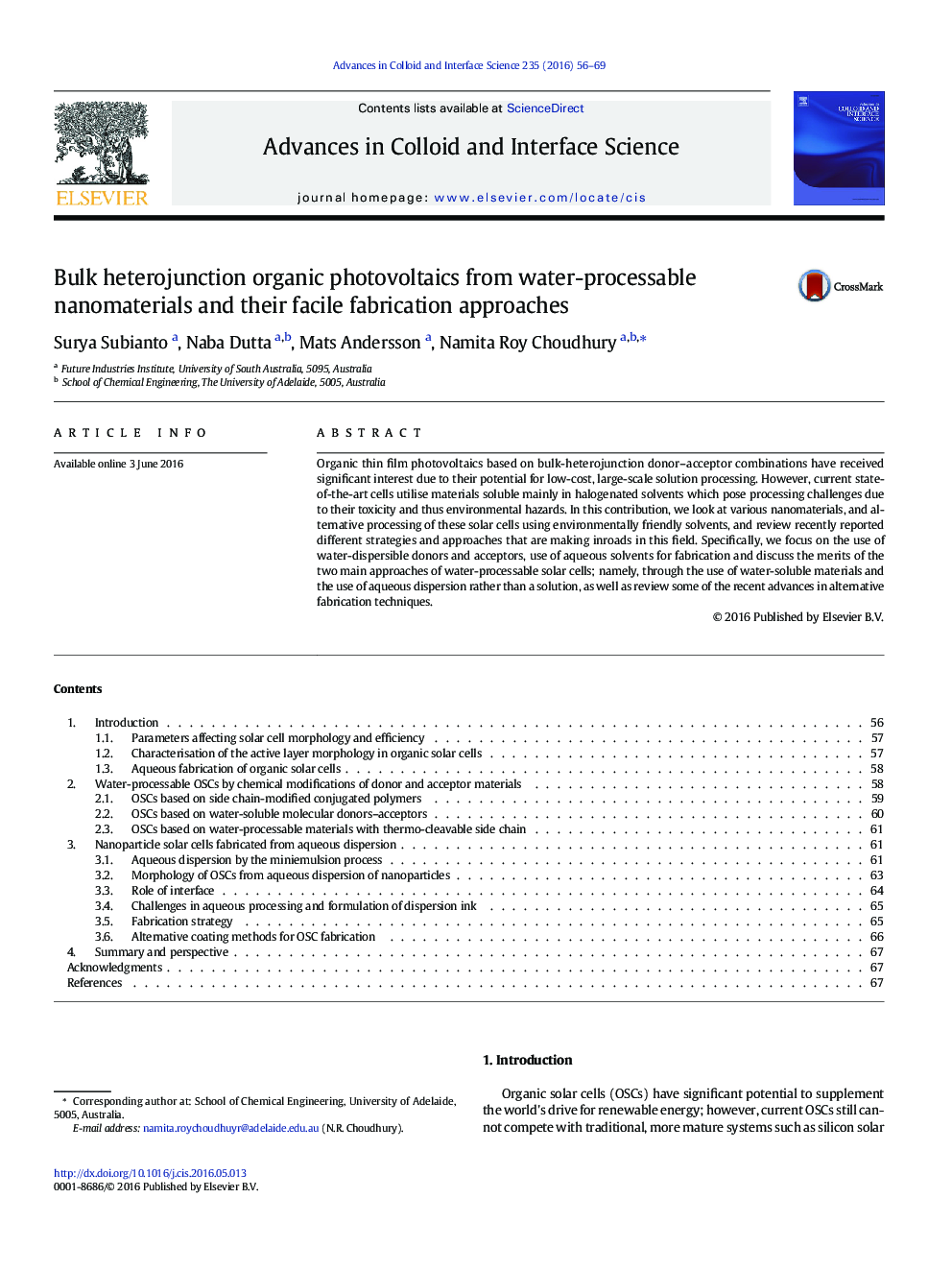| Article ID | Journal | Published Year | Pages | File Type |
|---|---|---|---|---|
| 590540 | Advances in Colloid and Interface Science | 2016 | 14 Pages |
Organic thin film photovoltaics based on bulk-heterojunction donor–acceptor combinations have received significant interest due to their potential for low-cost, large-scale solution processing. However, current state-of-the-art cells utilise materials soluble mainly in halogenated solvents which pose processing challenges due to their toxicity and thus environmental hazards. In this contribution, we look at various nanomaterials, and alternative processing of these solar cells using environmentally friendly solvents, and review recently reported different strategies and approaches that are making inroads in this field. Specifically, we focus on the use of water-dispersible donors and acceptors, use of aqueous solvents for fabrication and discuss the merits of the two main approaches of water-processable solar cells; namely, through the use of water-soluble materials and the use of aqueous dispersion rather than a solution, as well as review some of the recent advances in alternative fabrication techniques.
Graphical abstractFigure optionsDownload full-size imageDownload as PowerPoint slide
